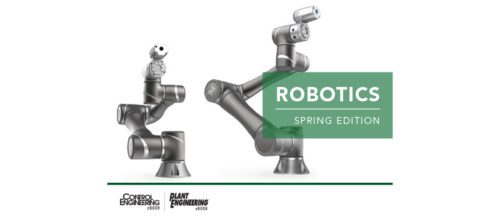Finding solutions and students for engineering’s grand challenges
Training the next generation of engineers to solve the grand challenges of engineering was among topics addressed by Dave Wilson, the director of academic programs at National Instruments (NI), at the 2014 NIDays convention held at Navy Pier, Chicago, on Oct. 8. See his three tips to attract students to engineering.
Future engineers, who can help address the grand challenges of engineering, can be attracted to engineering careers in three major ways. At the 2014 NIDays convention held at Navy Pier, Chicago, on Oct. 8, Dave Wilson, the director of academic programs at National Instruments (NI), spoke about the grand challenges of engineering and how to train the next generation to solve them. In the 21st century, technology development speed is faster than ever. Technology development has brought 14 grand challenges that humanity needs to address now or in the future. The challenges can be seen in four major fields: health, sustainability, security, and the joy of living. Some examples of these challenges include engineering better medicine, providing energy for fusion, restoring and improving urban infrastructure, and reverse engineering the brain. Wilson predicted that by 2020, people will be able to buy a machine that powers the brain. Wilson predicted that by 2020, people will be able to buy a computer that equals the power of the human brain.
With all the upcoming challenges, the question now becomes how to inspire the next generation to get excited about engineering and provide tools to solve future problems. Wilson stated that we must start educating them about science, technology, engineering, and math (STEM) topics at a younger age.
1) The first step is to attract students to engineering and technology, which can be done by simply showing them the world around us. For example, we can tell a student about a wind turbine and more importantly, inspire them to ask questions. We will be able to provide some answers, but encourage the students to keep asking and thinking critically.
2) The next step is to put the technology in their hands and so they can see how it works. At the university level, students can interact with engineering technology and come up with the solutions to the grand challenges themselves. For younger generation, National Instruments’ student design competition allows students to innovate. With more than 3,000 teams in 25 countries, engineering students were able to simulate a perfect NASA space launch, create a mission critical automated car, and creating a robot that mimics the movements of the cuttlefish.
3) The final step for these students is to take everything they have learned and apply it to the real world, hopefully in an engineering career.
Approximately 500,000 future engineers are expected to benefit from NI’s educational programs now in place.
– Anisa Samarxhiu and Joy Chang, digital project managers, CFE Media, Control Engineering and Plant Engineering.
Online extra
NI has a web page about the Engineering Grand Challenges. https://www.ni.com/company/programs/grand-challenges/
See below for other NI discussions about engineering inspiration.
Do you have experience and expertise with the topics mentioned in this content? You should consider contributing to our CFE Media editorial team and getting the recognition you and your company deserve. Click here to start this process.



